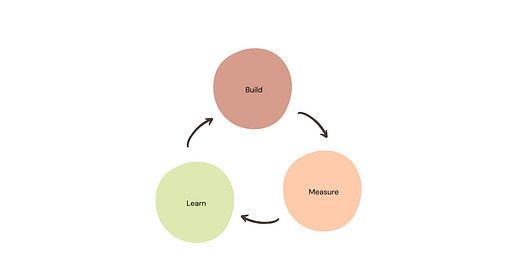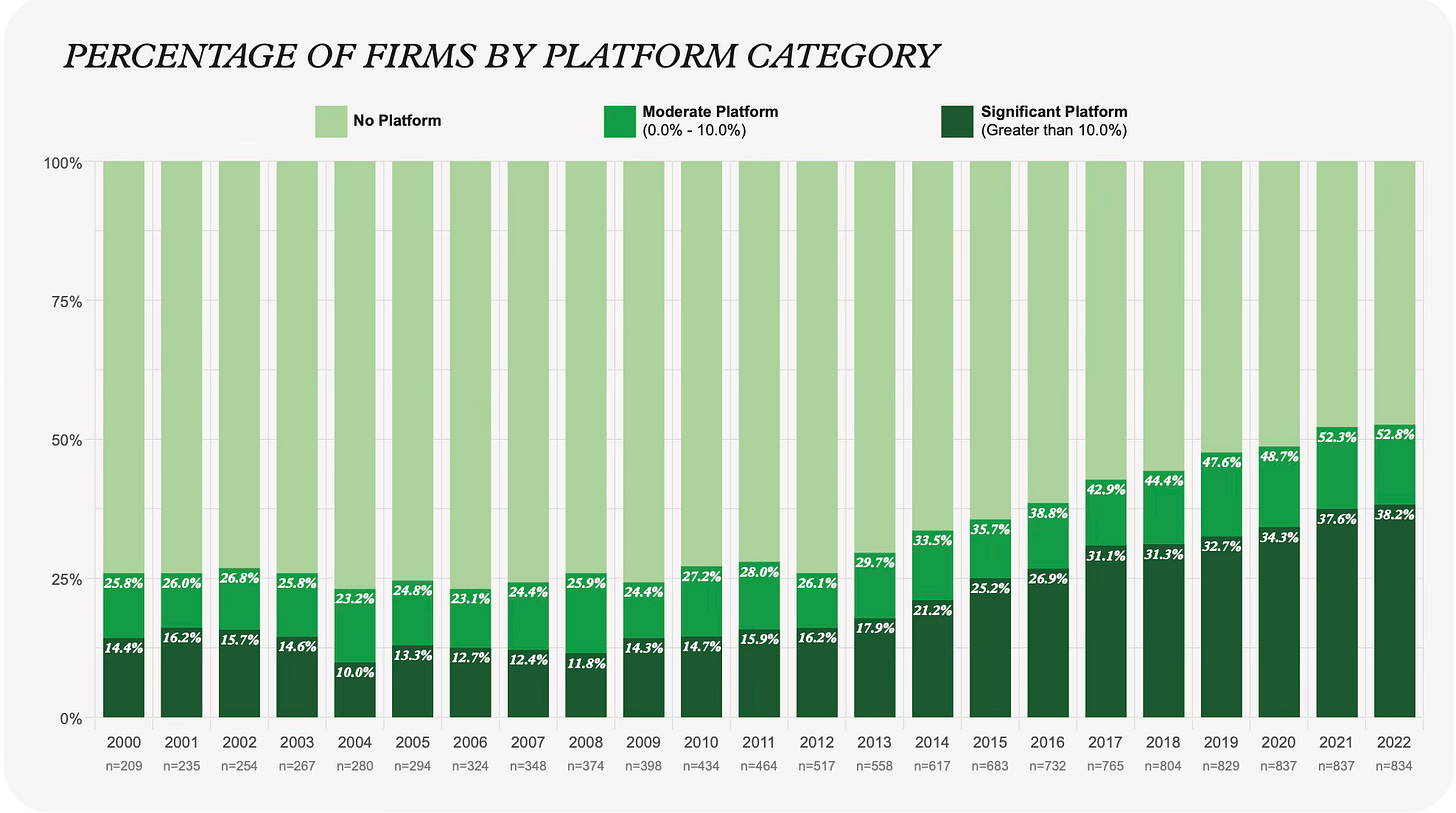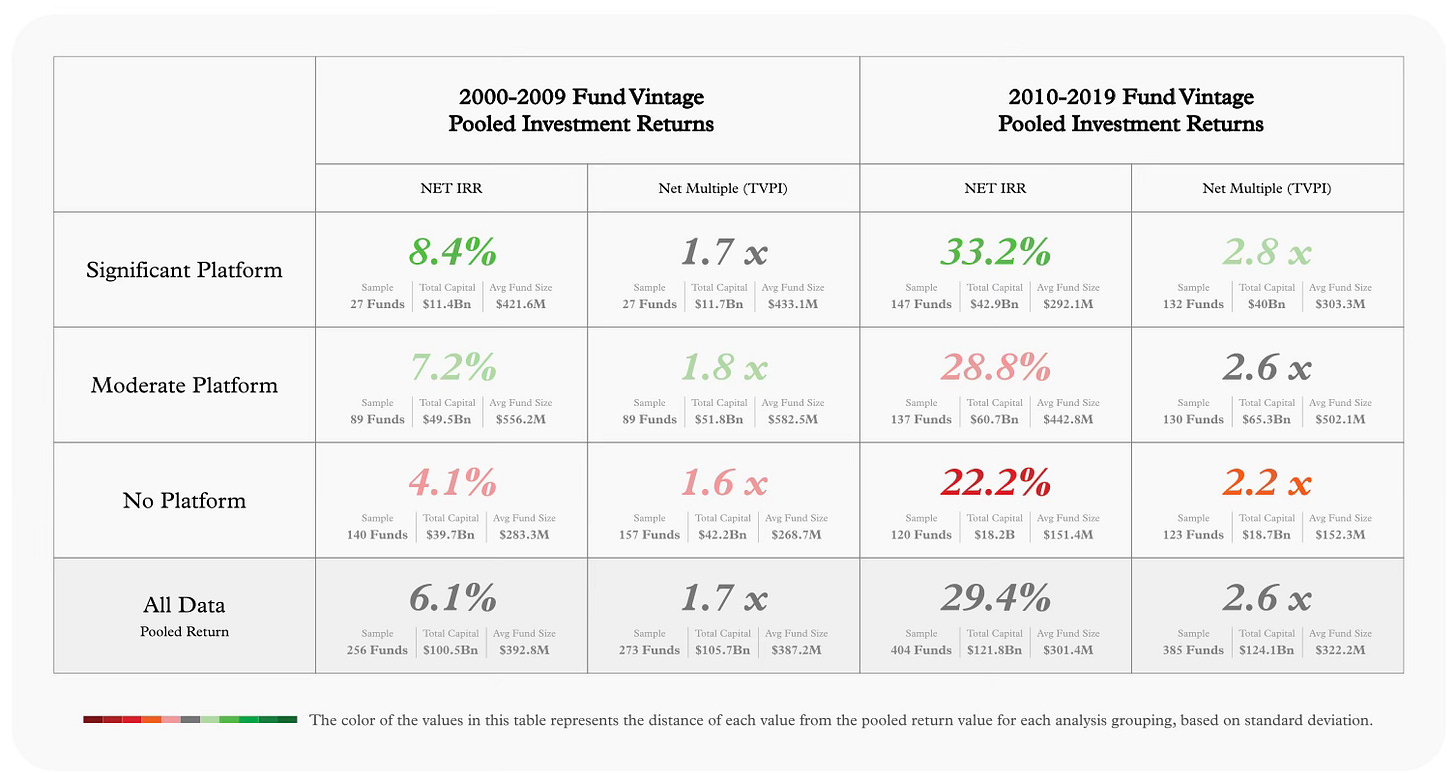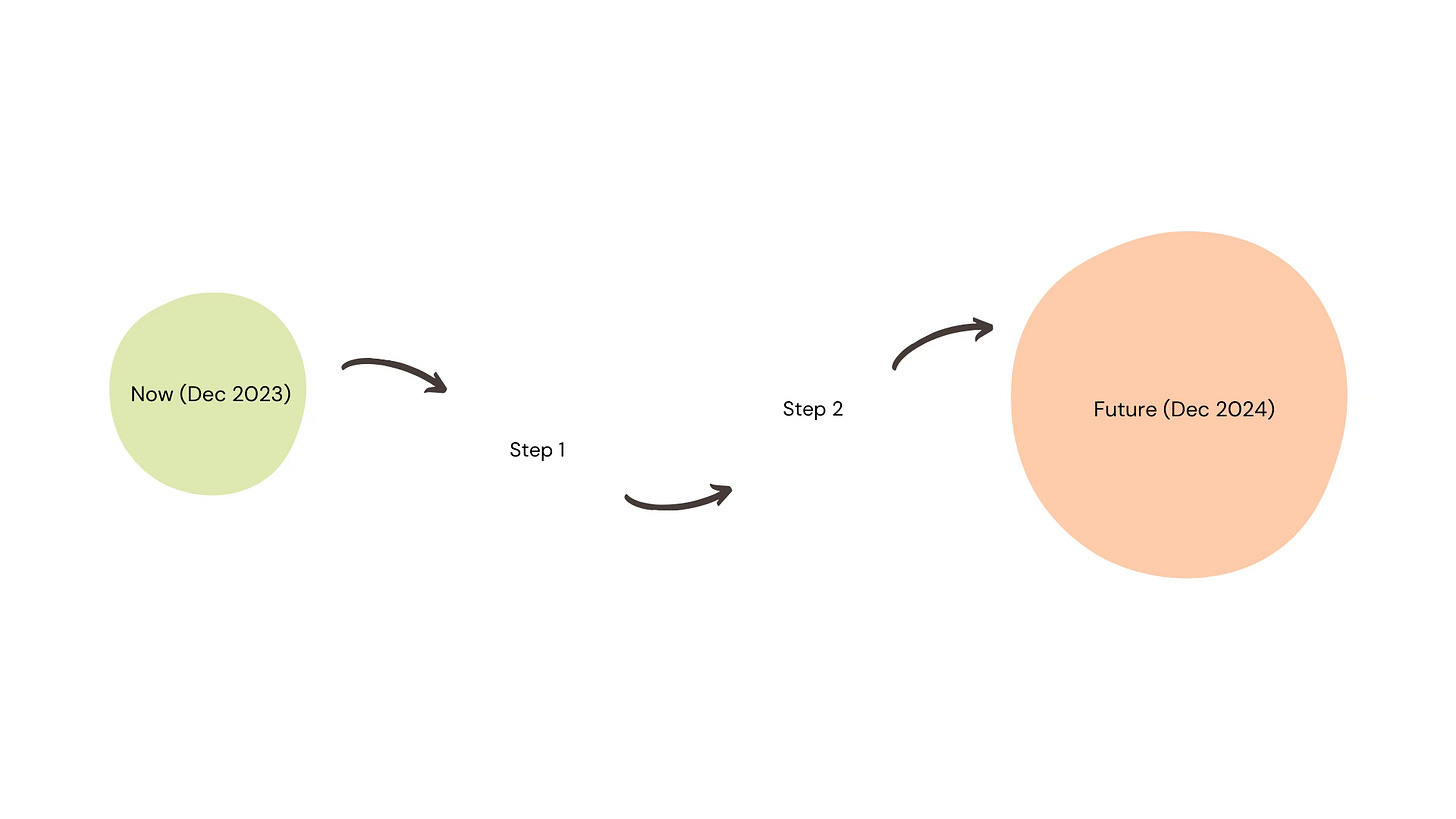This is part two of my blogpost about adding value as an investor. In part 1 I talked about the value-add gap that currently exists in the market because expectations of founders often don’t match the reality.
According to the VC Platform, platforms have surged from 25% in 2010 to more than 50% today. Quite an impressive growth trajectory compared to almost no change in 2000-2010.
Let's take a closer look at why VCs started investing in building platforms. The role of platform teams is instrumental in improving fund returns through access to better deals and founders, winning these deals, and then offering post-investment support to portfolio companies, improving their odds of success.
TL;DR because funds with platform outperform.
Hopefully by now it's clear that the platform's value is unquestionable, so let’s dive into providing top-notch value-add services without breaking the bank. It is a long game with many levels. Where do we begin?
As a product manager, I like to think about any process as the classic build-measure-learn method. We’ll start with ‘learn’ assuming you already tried something and are not starting from scratch.
Learn
Understand who your ‘customers’ and ‘stakeholders’ are.
This is an easy one - your portfolio companies are your current customers.
Now let’s put on a strategic hat:
What do your future ideal ‘customers’ look like?
Which portfolio companies/founders do you want to work with in 1-3-5 years time?
What are you missing now to achieve it?
Which services, experts, and systems do you need to have in place to be their number 1 choice?
Your stakeholders are another side of the coin:
Who should you be getting a buy-in from?
Who is your ‘champion’ and will support your ideas?
Identify your strengths and gaps - do your customer research.
Talk to your existing portfolio companies about their experience so far.
Analyse requests you received from them over time - are there any common patterns? How many could you address? How well?
Understand the market - conduct win/loss interviews.
Ever wondered why that great startup went with another fund and not you? Ask them. I previously published a win-loss interview template here.
Having done all or at least some of the above will give you a much better idea of where you are now. Try to map out your ‘now’ and ‘future’.
Build
Now, onto my favourite part - building, creating, experimenting, you name it!
Map out a list of your stepping stones - actions you need to take in order to get to your ideal future.
Often, one of the main platform challenges VCs face is that their founders ask for specific support in certain areas they are not strong in, e.g. sales expertise in Property tech in the MENA region. Let’s assume you want to be able to better help with requests like these.
Rationalise - why is it important to do this now?
This can be a combination of market research, insights you got from the interviews during the ‘learn’ phase, or quantitative data. Personally, I’m a big believer that most value comes from helping companies operationalise and customise the information everyone has access to. They don’t need another ChatGPT or Google. They need very specific targeted help with their niche.
The best way is to give them access to experts or founders who are a couple of steps ahead and know how to help. Whether that’s sales, product, hiring or something else they need help with. Based on my experience as a product mentor at Techstars, access to a network of best-in-class experts is often one of the most impactful benefits for founders, not only during the program but also long after. In the early stages, founders don’t have the money to pay for advisors. If you help them get access to it, everyone benefits - you get better ROI, and they grow the product faster. It’s a win-win.
Action - how will you achieve it?
Taking the above reasoning into consideration, your stepping stone here could be reaching out to people with the expertise your portfolio needs help with (e.g. sales and marketing experts in e-commerce and SAAS).
Important: find expert(s) who are proactive and genuinely passionate about working alongside you. Co-create the list of next steps, expectations, and ways to measure progress together.
Measure
Keep tracking your progress and continuously iterating. Repeat the process with all your focus areas..indefinitely.
If you need help finding the right expert, drop me a line on Linkedin. I have worked with some of the most knowledgeable and experienced advisors, and will happily connect you.
Happy value-adding and I wish you a lot of portfolio growth, improved valuations and exit outcomes! Happy holidays :)







